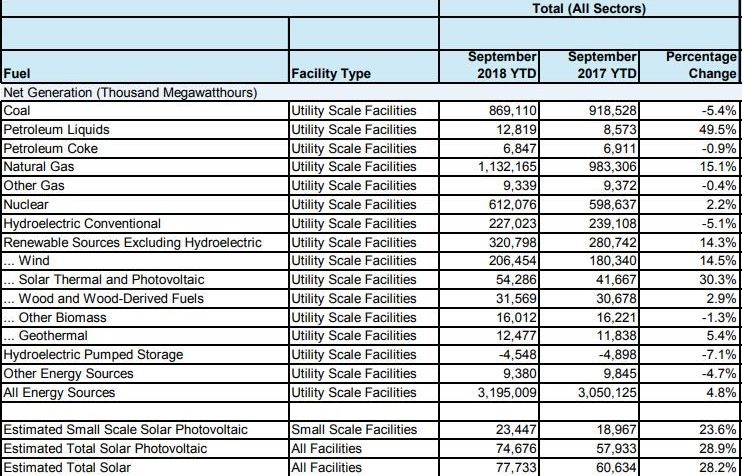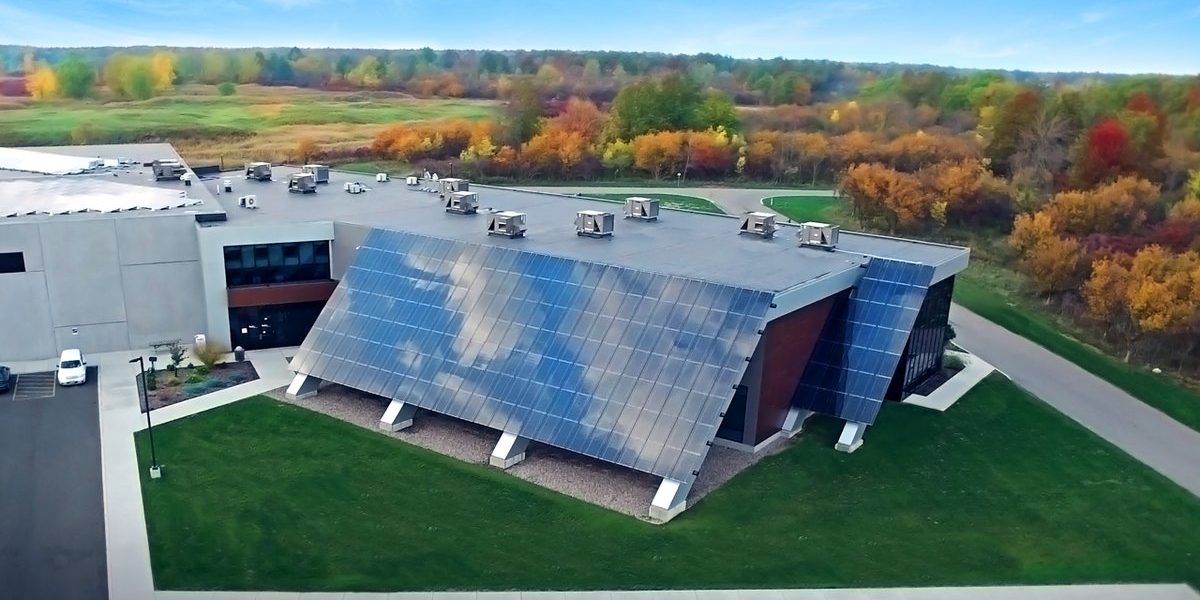Per the U.S. Department of Energy’s Energy Information Administration (EIA), solar PV electricity generation in 2018, much of it as an artifact of the 2017 growth coming into its own during its first full summer, has grown almost 29% through the first three quarters of 2018.
The data was made available in the EIA’s Electric Power Monthly, with Data for September 2018 (.pdf).

Along with solar’s growth was also natural gas expanding by 15% from a very large base, with coal down 5.4%, nuclear up 2.2% and wind up 14%. Wind and solar totaled 8.7% of all electricity generated during the first 9 months of the year.
If the United States happens to deploy somewhere near the same amount of solar capacity in 2018 as it did in 2017, then we could assume a similar increase in total electricity generation. This would mean though that the growth of total solar electricity will fall to an estimated 22%, by far the lowest growth rate in the past decade.
Recent growth rates included 35% in 2015 over 2014, and 44% in both 2016 and 2017 versus their prior years. With significantly expanded volumes of solar PV expected to be installed in 2019 through 2022, heavily toward the backend of that time frame, expect these growth rates to increase.
A speculative analysis suggests that if solar power were to slowly decrease its growth rate by 5% a year from next year’s projected slower growth rate of 22%, the industry would generate about 40% of today’s electricity usage by about 2038. In 2038, this model would suggest an annual solar electricity growth rate of 8.8%, almost a quarter of this year’s projected growth rate.
If 2020-2022 truly do more than double the volume’s deployed in 2017 and 2018, then we could see an early jump in growth rates. Not as high as the 2016-2017 years greater than 40%, but possibly getting back to the exponential growth 30% ranges for a short time frame.
For instance, if this year’s growth rate – 29% – held for the next decade, we’d hit 40% of total electricity around 2027, a probably unsustainable pace of development.
This content is protected by copyright and may not be reused. If you want to cooperate with us and would like to reuse some of our content, please contact: editors@pv-magazine.com.









* 29.3%